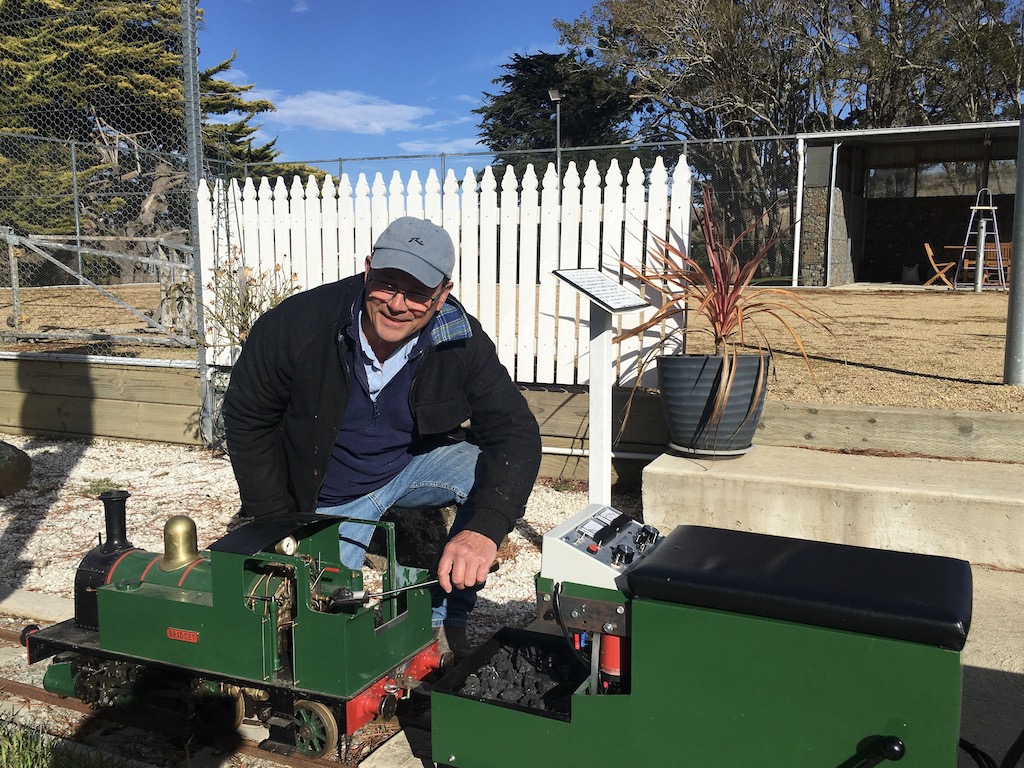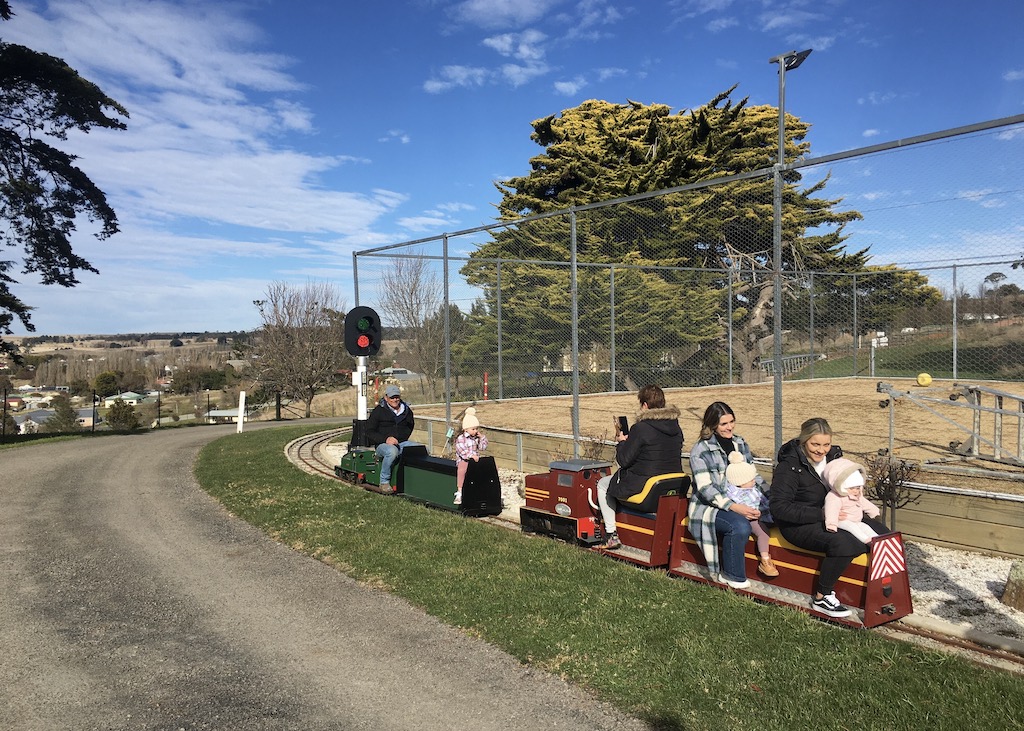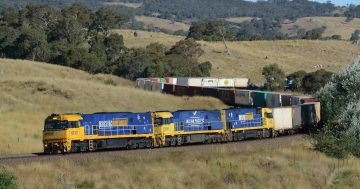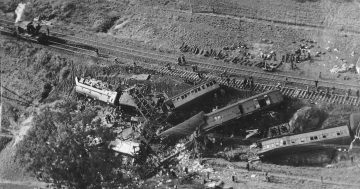
Neil Bennett with his miniature coal-fired steam train, one of two engines in his rail network, with another line being completed. Photo: John Thistleton.
At Taragla, Neil and Karyn Bennett are affectionately called ”Benny”. And just as Australians like shortening names, Neil likes shortening his 44 years of driving trains into a miniature railway set.
On their 65-acre (26-hectare) property, “Benny Hill”, Neil is building a one-kilometre railway line that includes a 60-metre trestle bridge similar to the Cooma-Bombala line at Chakola.
“It was timber. I thought I would make mine out of steel, as close as possible to what I can remember,” he said.
Neil has so far built 300 m of line, which terminates at the end of a 2.5-metre deep x 40m-long tunnel named ”Gundungurra”, the Aboriginal name for the Taralga area.
Instead of diesel locomotives, he is driving a little coal-fired steam engine, which he bought from another enthusiast in Tamworth, and an electric engine he bought from Penwood (miniature) Railroad at Nowra and painted in NSW’s colours.
“I also have a man building a 48-27-class replica and that was one of the engines allocated to Goulburn,” Neil said.
The engines and carriages pass whistlestop stations, level crossings with warning bells and lights, signals, a turntable, a steam train water tank, an old red phone box that is gathering graffiti, and silos and an old dairy with stunning artwork. As the next stages are rolled out, more themes will emerge, including a life-size ”Ned Kelly” at Glenrowan.
The son of train driver John Bennett, Neil joined the railway in 1973 following a conversation in year 9.
“I was at school one day and my mates said, ‘We’re going to the railway to get a job at lunchtime, do you want to come?’,” he said. Setting aside his desire to become a builder, 15-year-old Neil joined his mates.
Driving express trains such as the Southern Aurora and the Spirit of Progress were highlights during an era of complete government ownership before he worked for private companies Queensland Rail, Qube, Southern and Silverton, and Aurizon.
Neil, who retired in 2018, also drove trains delivering work gangs to track and bridge upgrades, watching, over 10-hour shifts, how they operated and noting the detail, which explains why he has things like expansion joints in the steel bridge to cope with 5 mm of expansion on a blazing hot day.
He considers himself a rough carpenter and is a self-taught concreter, welder and bricklayer with a good eye for engineering as well. His brother Terry operates an earthmoving business, which has proven as handy as the mountain of broken basalt rocks on ”Benny Hill” – a railway builder’s El Dorado, left over from the former Mulwaree Shire’s crushing plant on Neil and Karyn’s place.
“I get a rush of blood to the head,” Neil said, explaining why each stage ends up bigger than planned.
All infrastructure projects exceed their budgets, he says with a grin, and he is grateful for his “work supervisor” Karyn’s guidance. Karyn was born in Taralga’s railway cottage two years after the Taralga branch line closed in 1957 and shares his passion for trains. She remembers spinning the turntable and jumping on for a ride.
Much of the infrastructure and adornments arrive as donations from friends.
“I was given about two tonnes of scrap-steel reinforcement rods and cut them up and bent them, built a mould, poured the concrete for the tunnel and made 40 moulds for 40m of tunnel,” Neil said.
He has a further 400m of track to lay, another rail cutting to cover with rocks, and a station to complete.
“Once I get past the tunnel stage, it’s pretty much on level ground,” he said. “I’ll put a balloon loop in there. I would say within 12 months it’ll be finished.”

All along for the ride are (from left) Neil Bennett, granddaughter Lily, 3, Karyn Bennett and daughters Lewarna and Shannyn and granddaughters Ruby, 1, and Braela, seven months. Photo: John Thistleton.
Another resource is Taralga’s exceptional artists, such as Amy Curren, who painted the classic bush scene on the silos, and Australian wildlife specialist illustrator Thomas Jackson, who painted a blue wren on the wall of the property’s old dairy.
Neil and Karyn’s children, Ricky, Shannyn, Lewarna and Emma, came up with ideas such as Harry Potter’s Platform 9 3/4 on the tunnel’s brick-wall entrance. The stations are named ”Stone Broke”, ”The Cottage”, ”La Collins De Benny”, with a planned one, ”Stone Quarry”.
The railway line is for his grandchildren, friends and their families’ fun and enjoyment. Karyn shakes her head when friends suggest they turn it into a commercial venture, given the popularity of trains with children.
“No thank you,” she tells them, happy to avoid the rigmarole of insurance and bureaucracy.
The Bennetts love hearing the squealing delight of little children. Neil asks a friend’s little boy:
“How old are you?”
“I’m six!”
“It’s your lucky day,” says Neil. “You only have to be six to get your train driver’s licence.”









